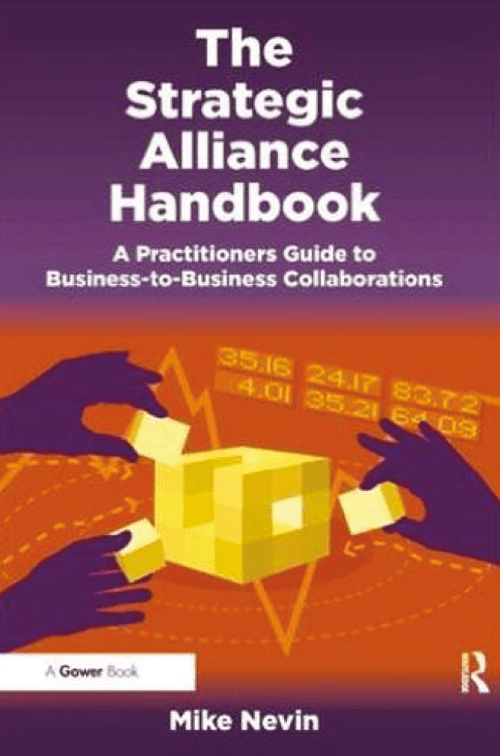The Strategic Alliance Handbook – A Practitioners Guide to Business-to-Business Collaborations by Mike Nevin, Gower Publishing, October 2014. ISBN9780566087790
28th April 2016 | Dr Jeremy Noad
 Strategic alliances provide organisations with an alternative approach to delivering growth and shareholder value from either organic or acquisition-led growth. A successful strategic alliance can enable a company to grow faster and more profitably through leveraging the strengths of one or more alliance partner compared with just going it alone. Alliances are gaining recognition as a core strategy to enable companies to compete effectively in both global markets and as a mechanism to enter new markets. Whilst more than 2,000 strategic alliances are launched worldwide each year, and this number grows each year, more than half fail and only around 10% are seen to be good, strategic alliances, which deliver the expected goals of the alliance partnership.
Strategic alliances provide organisations with an alternative approach to delivering growth and shareholder value from either organic or acquisition-led growth. A successful strategic alliance can enable a company to grow faster and more profitably through leveraging the strengths of one or more alliance partner compared with just going it alone. Alliances are gaining recognition as a core strategy to enable companies to compete effectively in both global markets and as a mechanism to enter new markets. Whilst more than 2,000 strategic alliances are launched worldwide each year, and this number grows each year, more than half fail and only around 10% are seen to be good, strategic alliances, which deliver the expected goals of the alliance partnership.
In this book, Mike Nevin, a strategic alliance practitioner with over 25 years’ experience brings together a comprehensive model of common success factors which can be identified as being best practice for strategic alliances. Nevin has worked on over 340 alliances featuring leading companies such as IBM, Microsoft, SAP, Oracle, Accenture, BT, O2, Rolls Royce, GSK, AstraZeneca, DuPont and BASF.
The book makes use of a database built up of over 200,000 observations of alliance best practice from 27,000 strategic alliances in order to create a model of common success factors. The comprehensive explanation of the 52 success factors and their relevance is supported throughout the book via 34 case studies. These case studies demonstrate both best practice in alliance partnerships and provide insightful lessons to be learnt in the development and implementation of a strategic alliance.
The book is split into five parts covering the emerging alliance best practice, benchmarking alliance relationships, creating new strategic alliances and it details the common success factors across five dimensions: commercial; technical; strategic; cultural and operational. A key differentiator compared with other books, is the insight provided by developing alliance capability.
For the practitioner, the book details the processes and success factors that alliance managers and executives can recognise and use as best practice. Successful application of best practice in the area of strategic alliances will improve the likelihood of executing and maintaining a successful strategic alliance partnership. The array of case studies demonstrates that the Strategic Alliance Handbook has applicability across multiple industries. By providing a common methodology, the book enables strategic alliance managers from each partner to have access to common measures and processes to enhance the likelihood of strategic alliance success. For researchers, the book provides a broad range of topics for future research ranging from the case studies to each element of the common success factors along with providing a benchmark of the current knowledge of best practice within strategic alliance partnerships.
Jeremy Noad


